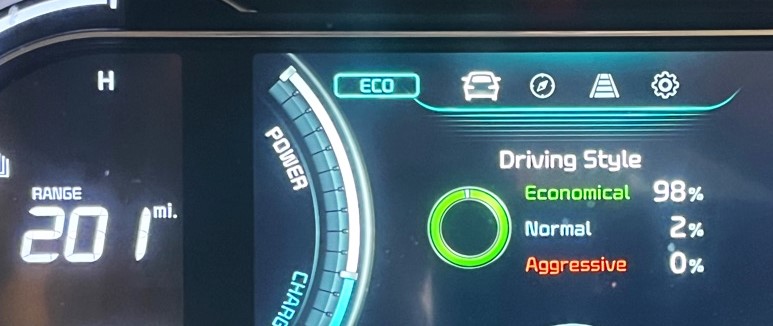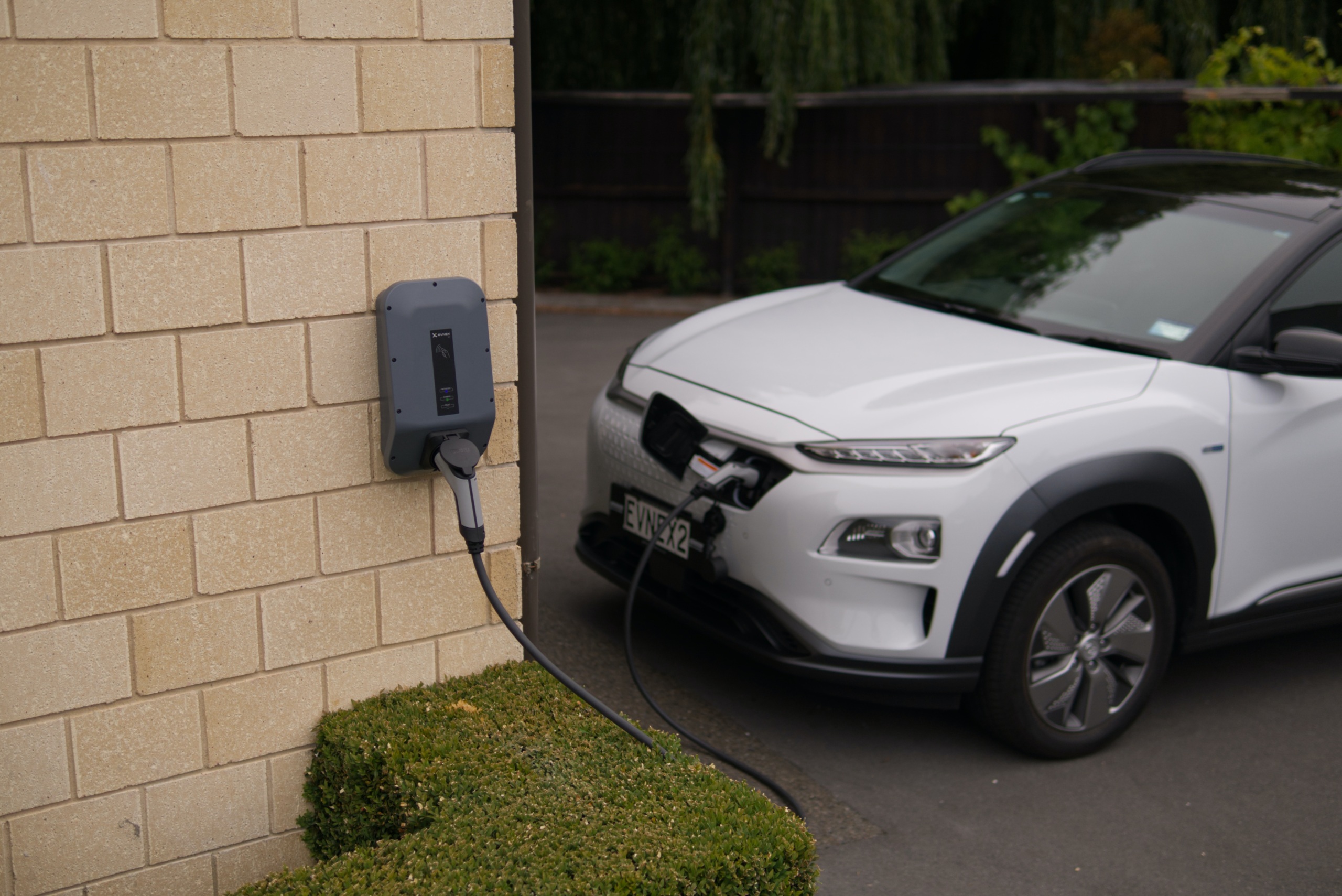
Destination: Zero Carbon
Three strategies to transform transportation in America
In the U.S., transportation is climate enemy number one. America’s transportation system produces more greenhouse gas emissions than any other sector of our economy and, on its own, is responsible for 4 percent of the world’s greenhouse gas emissions – more than the entire economies of France and the United Kingdom combined.
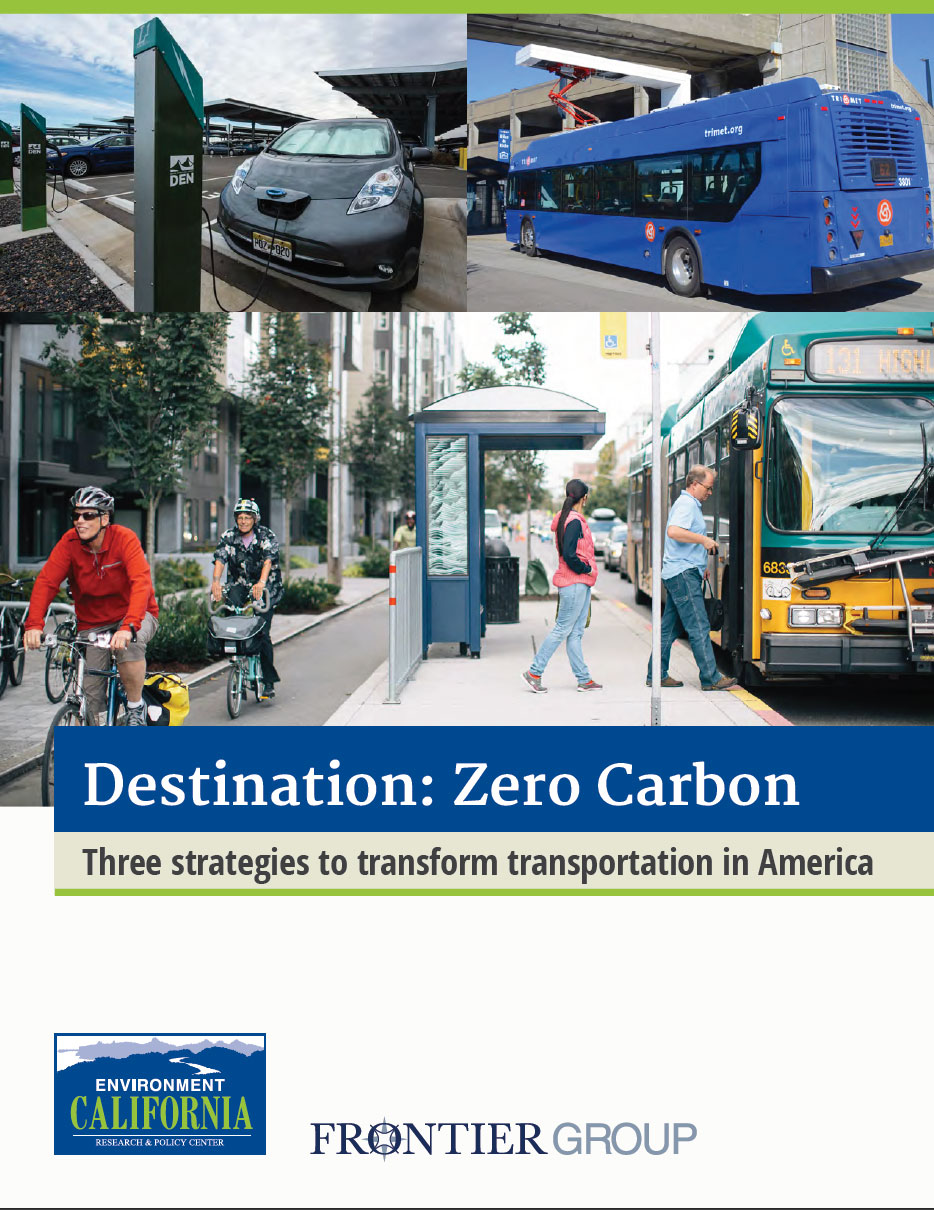
Downloads
In the U.S., transportation is climate enemy number one. America’s transportation system produces more greenhouse gas emissions than any other sector of our economy and, on its own, is responsible for 4 percent of the world’s greenhouse gas emissions – more than the entire economies of France and the United Kingdom combined.
There is no solution to global warming that doesn’t involve a sea change in how Americans get around and in how we power our cars and trucks. The good news: A clean, efficient, and sustainable low-carbon transportation system is possible. By phasing out fossil fuel vehicles, electrifying and improving our transit system, and getting more people walking and biking, the U.S. can take on today’s greatest environmental challenge, while creating communities that are healthier, safer and more livable.
Transportation is the leading source of carbon pollution in the U.S., and light-duty vehicles – including cars, pickups and SUVs – are the biggest contributors to the problem. In 2017, light-duty vehicles accounted for one-sixth of America’s greenhouse gas emissions, and nearly three-fifths of emissions from the transportation system. That is equivalent to:
- Nearly all the carbon pollution from all the remaining U.S. coal-fired power plants.
- More than the entire emissions of any country in the world except China, India, Russia and Japan.
Figure ES-1. U.S. light-duty vehicles emit more greenhouse gas emissions than most entire countries
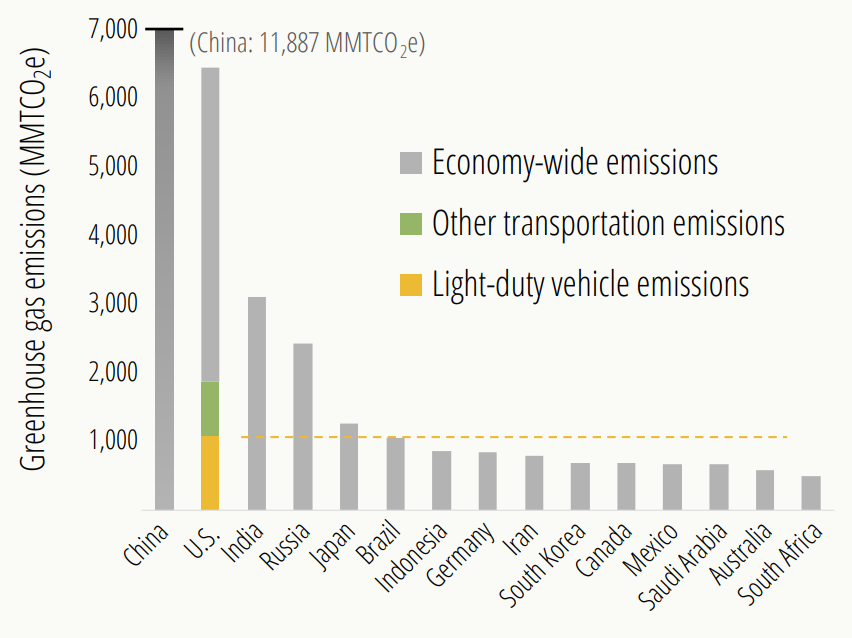
High transportation emissions result in large part from Americans driving more than 3.2 trillion miles each year in inefficient, polluting vehicles. Factors driving high emissions from light-duty vehicles include:
- Oversized, inefficient vehicles that run on dirty fuels. Typical U.S. vehicles are bigger, heavier and more powerful than those in most other countries, contributing to relatively high fuel use and carbon dioxide emissions per mile of travel.
- Subsidized driving. Driving in the U.S. benefits from direct and indirect subsidies that lead to increased vehicle travel.
- Lack of transit access. 45 percent of Americans lack access to public transit. And even in areas ostensibly served by transit, many Americans live in places where transit is inaccessible, unreliable, infrequent or low quality.
- Dangerous walking and biking. In 2018, nearly 6,300 pedestrians and more than 800 bicyclists were killed in traffic, increases of 3.4 percent and 6.3 percent, respectively, from 2017. These deaths reflect infrastructure that is unsafe, and that can dissuade people from choosing to get around without a car.
- Car-dependent land use patterns. Many communities in the U.S. have attributes that make it hard to get around without a car, including low density and single-use zoning that separates homes and workplaces. Research shows that Americans who live in low-density areas travel more often by driving, drive more miles, and tend to own more vehicles.
To prevent the worst impacts of global warming, the U.S. must begin to rapidly decarbonize its transportation system. Three goals, which are achievable with proven policies and existing technology, can help eliminate emissions from cars and light trucks and contribute to America’s transition to a zero-carbon transportation future:
Phasing out fossil fuel vehicles can enable the U.S. vehicle fleet to operate with zero greenhouse gas emissions from driving or charging, if such a shift is accompanied by a transition to a grid powered by clean, renewable energy. Electric vehicles also benefit public health, as they do not emit tailpipe emissions like particulate matter and nitrogen oxides that cause cancer, asthma and other health problems.
All new light-duty cars and trucks sold after 2035 should be electric vehicles. To achieve this goal, policymakers should:
- Set requirements to phase out fossil fuel-powered vehicles and adopt EV mandates.
- Make EVs cheaper to buy and own through tax credits and other incentives.
- Expand and improve EV charging infrastructure.
Electrifying and improving transit can create clean transit fleets for cities and schools, particularly if those fleets are powered by clean energy. Electric buses emit no tailpipe emissions and would improve the health of children who take school buses and the high-density populations often served by buses.
U.S. transit agencies and school districts should replace all transit and school buses with clean electric buses by 2030. To achieve this goal, policymakers should:
- Adopt electric bus commitments at all levels of government, and at transit agencies and school districts.
- Provide transit agencies with financial and technical assistance to help them make the switch to electric buses while maintaining or increasing service.
Getting more people moving by foot, bike and transit can immediately reduce emissions. Walking and biking infrastructure has been shown to benefit communities in a variety of ways, including increased safety, economic benefits for local businesses, improved health and happiness, and more freedom for older adults and people with mobility challenges.
The U.S. should at least double the number of people who travel by foot, bike or transit by 2030. To achieve this goal, policymakers should:
- Ensure that walking, biking and transit are safe, affordable, accessible and enjoyable.
- End subsidies that make driving artificially cheap to help make low-carbon transportation the easiest, cheapest, most convenient option.
These three goals – phasing out fossil fuel vehicles, electrifying transit, and getting more people traveling by foot, bike and transit – can help the U.S. create a zero-carbon transportation future in which vehicles are powered by clean, renewable energy, and in which more people get around without a car. By adopting goals to decarbonize transportation, policymakers can immediately begin reducing transportation emissions, while ensuring healthier, happier and safer communities for everyone.
Topics
Find Out More


Environment California Program Agenda 2024
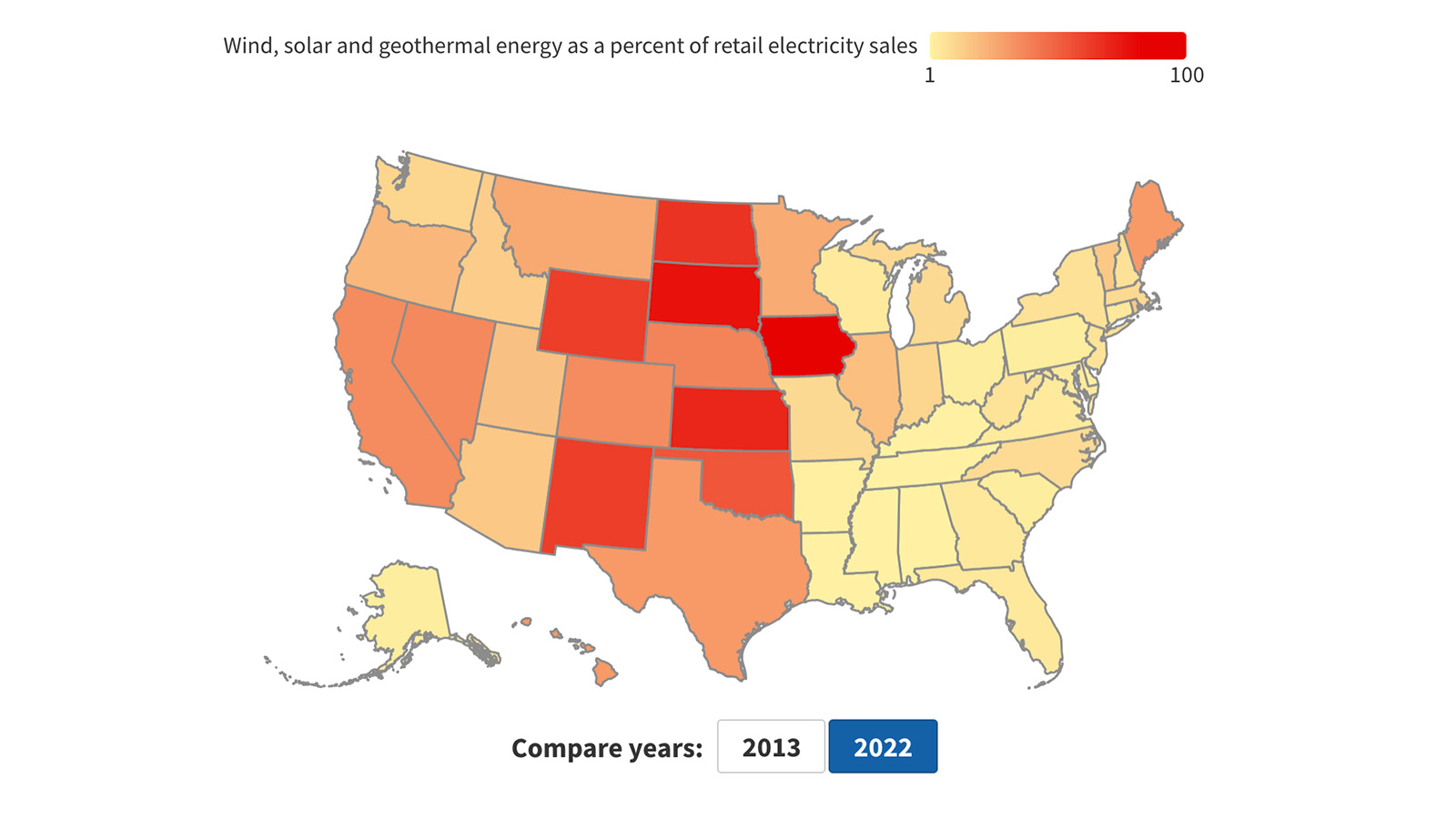
Renewables On The Rise Dashboard
